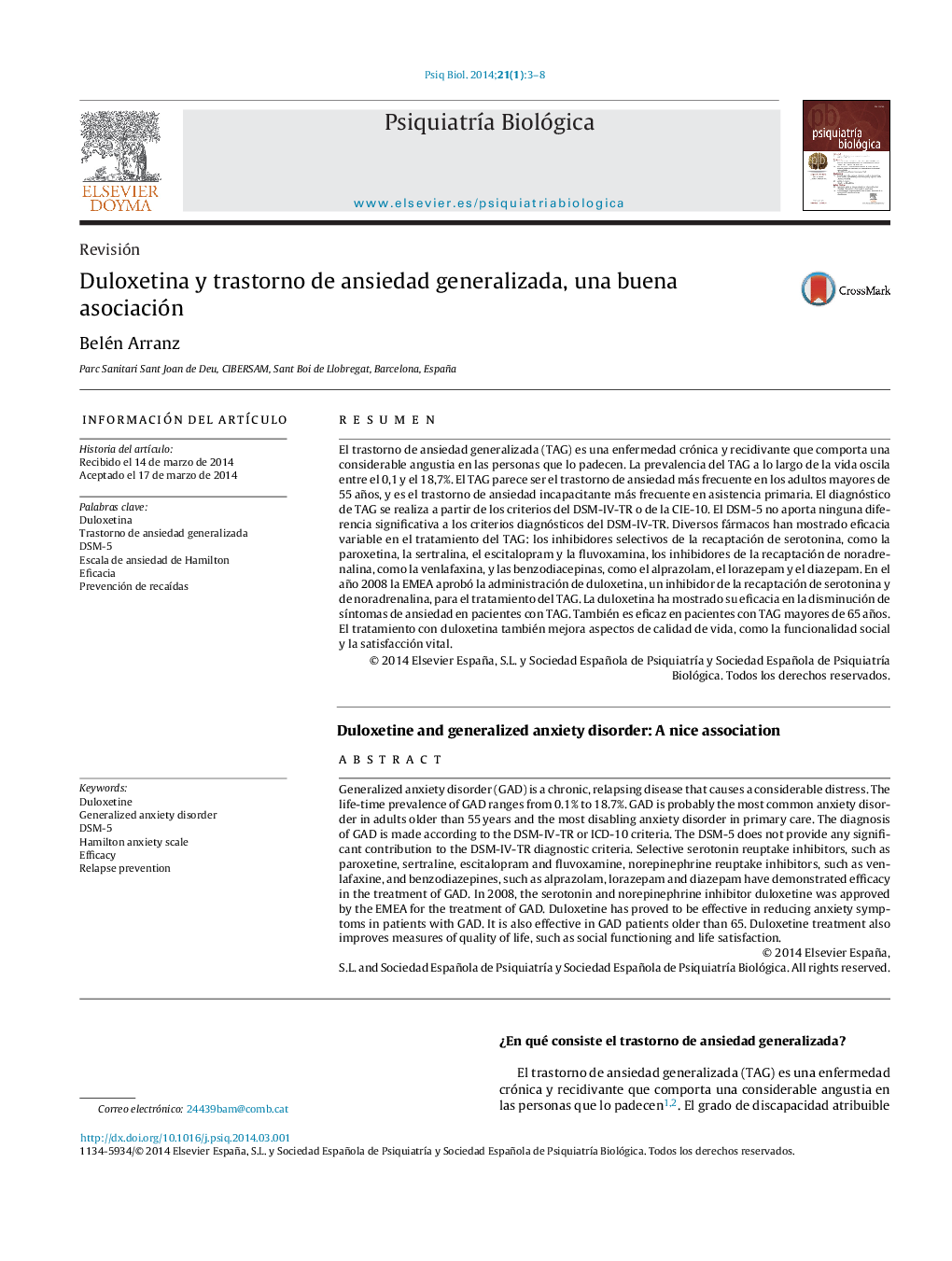| Article ID | Journal | Published Year | Pages | File Type |
|---|---|---|---|---|
| 4188645 | Psiquiatría Biológica | 2014 | 6 Pages |
Abstract
Generalized anxiety disorder (GAD) is a chronic, relapsing disease that causes a considerable distress. The life-time prevalence of GAD ranges from 0.1% to 18.7%. GAD is probably the most common anxiety disorder in adults older than 55Â years and the most disabling anxiety disorder in primary care. The diagnosis of GAD is made according to the DSM-IV-TR or ICD-10 criteria. The DSM-5 does not provide any significant contribution to the DSM-IV-TR diagnostic criteria. Selective serotonin reuptake inhibitors, such as paroxetine, sertraline, escitalopram and fluvoxamine, norepinephrine reuptake inhibitors, such as venlafaxine, and benzodiazepines, such as alprazolam, lorazepam and diazepam have demonstrated efficacy in the treatment of GAD. In 2008, the serotonin and norepinephrine inhibitor duloxetine was approved by the EMEA for the treatment of GAD. Duloxetine has proved to be effective in reducing anxiety symptoms in patients with GAD. It is also effective in GAD patients older than 65. Duloxetine treatment also improves measures of quality of life, such as social functioning and life satisfaction.
Keywords
Related Topics
Health Sciences
Medicine and Dentistry
Psychiatry and Mental Health
Authors
Belén Arranz,
